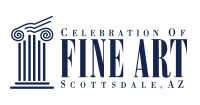Though art has always been a part of Cathy Sheeter’s life, she didn’t set out to have a career in it. She was headed toward the sciences––more specifically, animal sciences. And as she tells it, it was only through serendipity that she ended up as a career artist.
While the career path may have come as a surprise, her chosen subject matter did not. Being drawn to animals and nature––and using her background in animal sciences––it was only natural that these became her area of focus.
Still, there is one more twist to this story and that’s Cathy’s medium of choice. It’s one not many know about and it’s also considered by many artists to be one of the most difficult mediums to tackle. It’s incredibly time consuming and not very forgiving. Yet, it’s one Cathy was drawn to and has mastered over the years to the point where most who see her work for the first time are in disbelief when they learn it’s not photography. What is this medium?
Read on or watch the video below to discover what Cathy’s medium of choice is and how she creates it.
When did you know art was your calling?
I was very fortunate to grow up in a really supportive family that encouraged all different types of arts. One of my earliest childhood memories was my mom drawing me a coloring book page for me to color in. And my dad has always been a woodworker, so really I don’t remember a point in my life where I wasn’t doing some type of art, however, I didn’t expect it to be my profession.
My college degree was actually animal sciences, and I thought I was going to go into the sciences. It was through serendipity I ended up working full-time in my art. And I feel very fortunate to get to do something I love every single day, and I’ve been involved with other amazing artists and helping found an international organization of scratchboard artists to make this medium a little bit more well known within the fine art spectrum and different galleries.
How do you describe your art?
It’s a really cool subtractive art form. It starts with a layer of white clay and then that clay is coated with dark ink. Typically scratchboard would be black ink, but it can also be darkly colored inks. Then I use a variety of abrasive tools to scratch and remove the top surface ink and re-expose the white clay that’s underneath. After I’m done with that black and white scratching, sometimes I come back over the top of the scratches with special colored inks to fill the scratching back in with the color. I work in a lot of layers, putting on color and then scratching another layer and then another wash of color and scratching it away and trying to bring my animals to life to where they look like they could come right off of my artwork.
What do you love most about creating art?
Getting to bring my own vision into every piece of artwork. Nature has always been my inspiration, even as a small child. Animals have been very integral to my life. So not just getting out in nature, but seeing wildlife. And most of my work does come from reference photos, and it’s almost all photography that I take myself. I spend a lot of time out hiking and going to really cool, amazing places in nature to get reference photos.
And sometimes the most amazing experiences are not the ones where you’re in Yellowstone per se. It might just be out hiking and a bobcat runs across your path and stops and looks at you. I’m always prepared with my camera to get really good photos. I’ve had just amazing animal experiences that create great stories. Then I bring that authentic feel into my work to where I really understand the animals, because I’m out there seeing them and not just taking photos, but studying them, watching them, watching the way light changes, the musculature and interactions. Those are all really important to me––to bringing my artwork to life.
How do you keep yourself challenged?
I really love backlighting both in photography and in my artwork, but it does pose some challenges of finding this balance of bright edges and the right amount of shadowing, but still allowing the details of the work to show. And then sometimes angles and positions can be a challenge. But as far as creatively challenging, a lot of times I’m combining numerous photos together and sometimes trying to get the trees from one photo and the animal from another photo or flowers and birds, all the lighting to work together and come together can be a challenge.
What brings you back to the Celebration of Fine Art?
There are a lot of things that are really fabulous about this location, but the biggest thing is the family. The people, not just the other artists, but the collectors that come through feel like part of the family as well. But also just being surrounded by all this wonderful artistic energy of the other artists and being able to bounce ideas off of artists that I would never have the opportunity to otherwise. And not necessarily somebody that works the same as me, but I can go to my neighbor, Jon Linton, who’s a wonderful photographer and say, “Hey John, what do you think about this?” And he might suggest, “Well, have you thought about this, about the composition?”. Being able to go to all these different artists and get their feedback, that’s a really fun thing about this environment.

